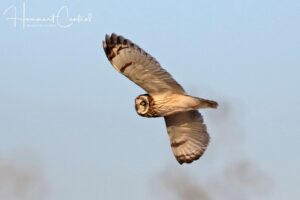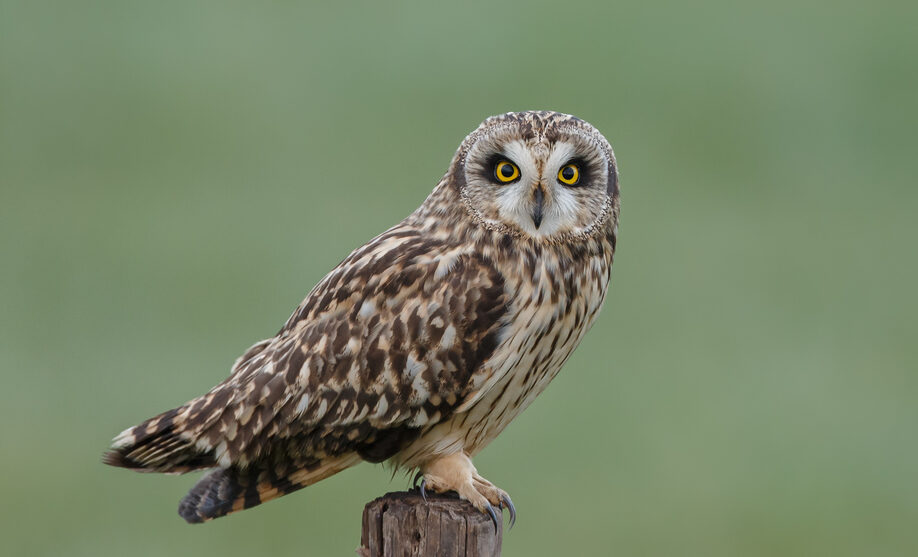Short-eared Owl, Asio flammeus
Bill Rowe
Wait…there’s an owl that lives in grasslands and nests on the ground? Yes, indeed—it’s called the Short-eared Owl. On our own continent, this widespread bird breeds in Alaska, Canada, and some of the northern and western states, and comes south to winter throughout the rest of the U.S. and down into Mexico. Then, as we look around the rest of the world, we can find it nesting in the pampas of South America; across much of Europe and northern Asia in tundra, moor, and marsh; and on islands large and small like Hawaii, the Galapagos, and many more. And, as in North America, it adds a great deal to that range in winter, migrating to some parts of Africa and large swaths of central and southern Asia. It is truly one of the most cosmopolitan of birds, though not well known to most people. A small-mammal specialist, it preys first and foremost on voles, also shrews, mice, lemmings, rabbits, etc., along with some birds now and then. It is most active in the twilight periods of dawn and dusk, but it also hunts by night and in the daytime as well, cruising over the fields with its stiff-winged, mothlike flight. Since its prey tends to go up and down in numbers in a cyclic pattern, the Short-eared Owl too will be more numerous one year than another, and sometimes absent. It will move around nomadically in its search for the areas that happen to have a good supply of small mammals that year; and where it finds them, it will be in the company of other raptors with similar needs, such as Northern Harriers and Red-tailed and Rough-legged Hawks.
IDENTIFICATION: Within its normal habitat, there is nothing very much like a Short-eared Owl. It is about the size of a crow, or “medium” for an owl, and may look larger in flight due to its long wings. It has the typical round facial disk of an owl, with black “mascara” around its staring yellow eyes. As it flies around, it shows white underwings with black wingtips and wrist marks, while on the upper side it has pale buff patches in the outer wings (primaries). As an additional clue, you may hear its odd sneezy or barking call before the bird comes into view. Its nearest relative, the Long-eared Owl, is a scarce woodland bird that can be confused with it only if both species happen to be roosting in a copse or a treeline near open fields; but the Long-eared is more heavily streaked below, with a chestnut facial disk and some differences of wing pattern in flight (see your field guide). And a hunting Barn Owl, rare in Missouri, is whiter with gold-and-gray upperparts and a heart-shaped white face.
ST. LOUIS STATUS: Mostly a late-fall through early-spring visitor, seen unpredictably, sometimes as a migrant, sometimes as a resident through the winter in marshy or prairie-like areas (e.g., Riverlands, B.K. Leach Conservation Area, Clarence Cannon National Wildlife Refuge) or in fields of corn stubble in farmland (e.g., the vicinity of Carlyle Lake). With very rare exceptions, not a nesting bird in Missouri.
Learn more and listen to the calls of Short-eared Owls here.


In flight, from below
Photo Credit: Doug Hommert
In flight, from above
Photo Credit: Al Smith




